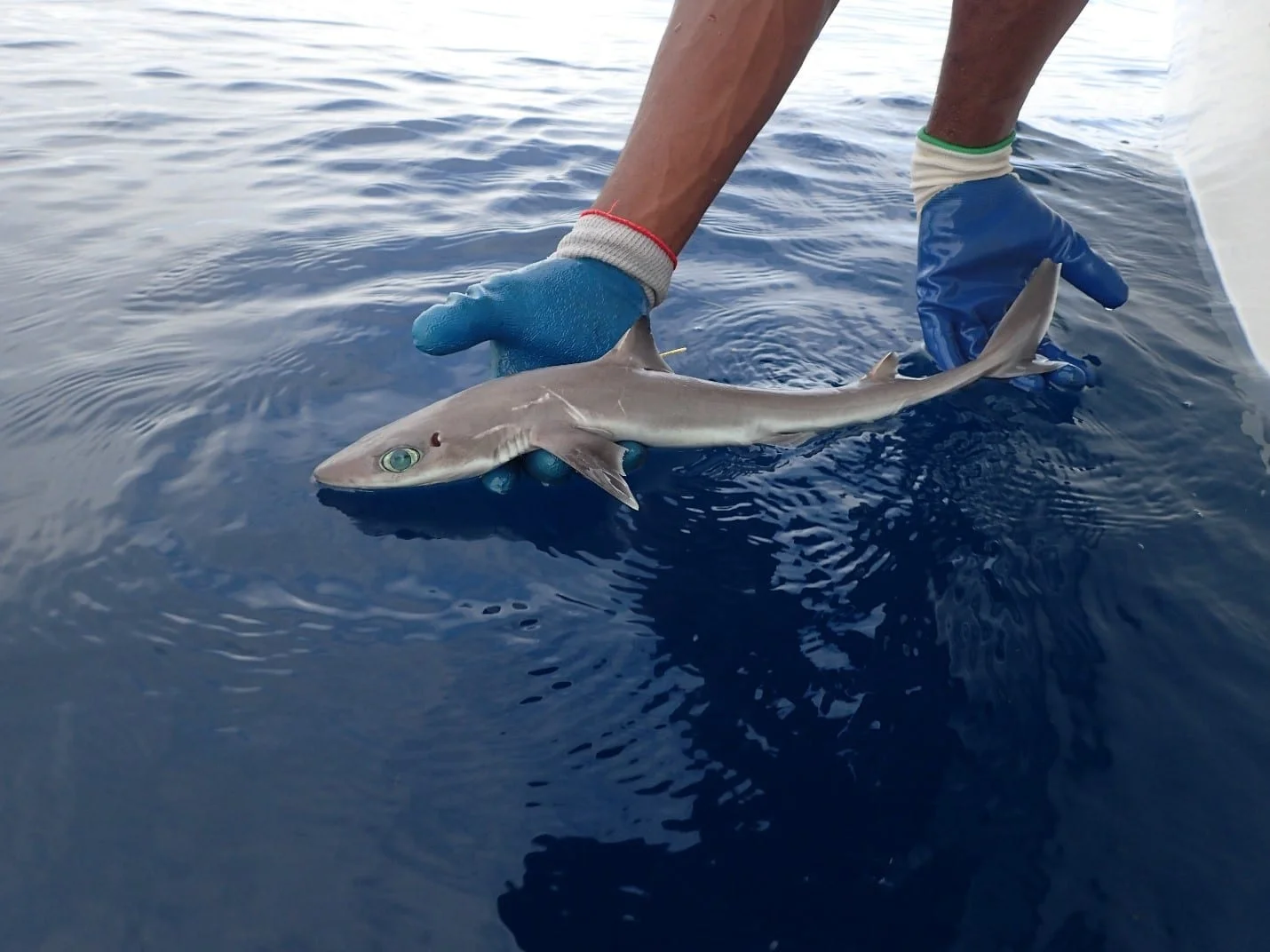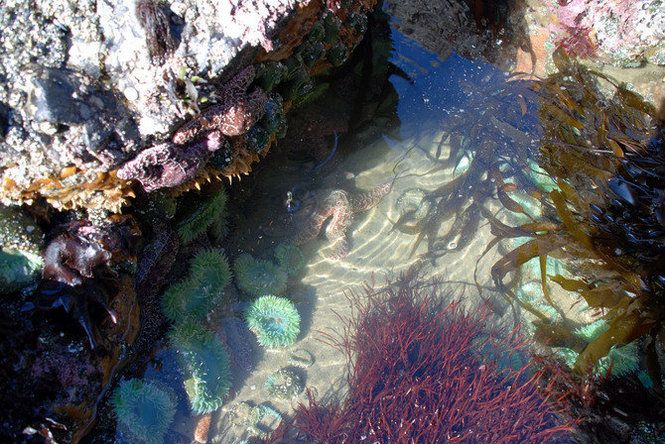Chain dogfish sharks (also known as the spiny dogfish, Squalus acanthias) are fascinating creatures that inhabit a range of marine environments. Known for their distinct spiny fins and slender bodies, these sharks are often found in temperate waters around the world. While they are primarily known for their presence in deeper offshore waters, many wonder whether these resilient predators can be found in the shallower, often tumultuous waters of tidal pools. In this article, we’ll explore the habitats of chain dogfish sharks, their behavior in relation to tidal zones, and whether these sharks can indeed be found in tidal pools.
1. Understanding the Chain Dogfish Shark
Chain dogfish sharks are a species of small, predatory sharks that typically grow to about 2 to 3 feet (60 to 90 cm) in length. They are named for the characteristic spines on their dorsal fins, which can be dangerous if provoked. These sharks are known for their schooling behavior, traveling in large groups in search of food.
Chain dogfish are opportunistic feeders, preying on smaller fish, invertebrates, and other marine life. Despite their somewhat intimidating appearance, they are not considered dangerous to humans. These sharks thrive in cooler temperate waters, making them common in the North Atlantic, the North Pacific, and off the coasts of the United States, Canada, and northern Europe.
2. The Natural Habitat of Chain Dogfish Sharks
Chain dogfish sharks are primarily found in continental shelf waters, typically between 100 and 600 feet (30 to 180 meters) deep. These sharks are most commonly found in deeper offshore waters, where they hunt for prey in cooler, more stable environments. They tend to stay within these mid-depth ranges, avoiding the shallows unless they are young or in search of specific feeding opportunities.
As migratory creatures, chain dogfish sharks are known to travel seasonally, moving closer to the shore during the warmer months in search of food and then migrating back to deeper waters during colder periods. Despite this, they do not typically reside in shallow, sheltered areas like tidal pools, which are highly variable and affected by the ebb and flow of tides.
3. Do Chain Dogfish Sharks Live in Tidal Pools?

Tidal pools are unique ecosystems formed along coastlines, where seawater is trapped in depressions during high tide and then left behind during low tide. These shallow pools can be found along rocky shores and are typically inhabited by species that are adapted to endure fluctuations in water temperature, salinity, and oxygen levels.
While tidal pools are home to many species of fish, crustaceans, mollusks, and other marine life, chain dogfish sharks are not typically found in these environments. The main reasons for this are:
1 Depth and Habitat Preference
Chain dogfish sharks generally prefer deeper waters and are adapted to life at greater depths. Tidal pools, by nature, are shallow, and the environment’s changing conditions (especially during low tide) are not conducive to the survival of larger, predatory sharks. These pools do not provide the stability and depth that chain dogfish sharks require for hunting and navigating effectively. Furthermore, their prey species are more likely to be found in deeper waters.
2 Temperature and Salinity Fluctuations
Tidal pools experience extreme fluctuations in temperature and salinity, particularly during low tide when they can become exposed to the air. These changes can be stressful for many marine animals, and while some fish and invertebrates are specifically adapted to such conditions, chain dogfish sharks are not. They prefer the cooler, more stable temperatures of deeper ocean waters, which are less variable than the shallow, sun-exposed pools.
3 Feeding Habits
Chain dogfish sharks are carnivorous predators, relying on a diet of small fish, invertebrates, and occasionally cephalopods. Tidal pools, while rich in biodiversity, do not support the same types of prey that chain dogfish sharks would normally hunt. The smaller size and limited prey in tidal pools would not be sufficient to sustain a predator like the chain dogfish shark, which is accustomed to feeding in deeper waters where schools of fish and other prey are more abundant.
Young Chain Dogfish Sharks and Shallow Waters
While adult chain dogfish sharks do not typically inhabit tidal pools, young sharks (juveniles) may be found in shallower waters, including estuaries and inshore areas, during certain stages of their life cycle. These juvenile sharks may use coastal regions, including tidal zones, for shelter and feeding before migrating to deeper waters as they mature.
The shallow waters near estuaries provide a safer environment for young sharks, offering protection from larger predators. These juvenile sharks might also take advantage of the rich food resources found in these areas. However, once they reach a certain size and maturity, they generally move to deeper offshore waters where they can find larger prey and more stable environmental conditions.
Other Sharks in Tidal Pools

While chain dogfish sharks are not typically found in tidal pools, other species of sharks have been observed in shallow, intertidal zones. For example, smaller species like the smooth dogfish or the spiny dogfish (a close relative of the chain dogfish) may be found in coastal waters. These species are better adapted to tolerate the environmental fluctuations of tidal pools, as they can thrive in both shallow and deeper waters.
It’s important to note that many of these species are not permanent residents of tidal pools but may use them as feeding or resting grounds during certain times of the day or year. However, the chain dogfish shark remains largely absent from these environments due to its preference for deeper, cooler waters.
Conclusion: Chain Dogfish Sharks and Tidal Pools
In summary, chain dogfish sharks do not live in tidal pools. These sharks are primarily found in deeper, cooler offshore waters where they can hunt and survive in more stable conditions. While juvenile sharks may occasionally inhabit shallower waters temporarily, they do not remain in tidal pools for extended periods.
Tidal pools, though fascinating and biologically diverse, do not provide the necessary conditions for larger predators like chain dogfish sharks. These pools are better suited for smaller, more resilient species that can withstand temperature fluctuations, changes in salinity, and the challenges of low tide exposure. For those interested in seeing chain dogfish sharks, deeper coastal waters or offshore expeditions are more likely to offer a glimpse of these remarkable creatures.
Understanding the habitat preferences of chain dogfish sharks helps us appreciate the delicate balance of marine ecosystems and the need for conservation efforts to protect species in both deep and shallow waters.



